- Home
- Glossary Term
- Dynamic Pricing
Overview
Dynamic pricing, also known as surge pricing, demand-based pricing, or time-based pricing, is a pricing strategy where the price of a product or service fluctuates based on real-time supply and demand, market conditions, customer behavior, or other external factors. This approach leverages data analytics, algorithms, and automation to optimize prices dynamically and maximize revenue or market competitiveness.
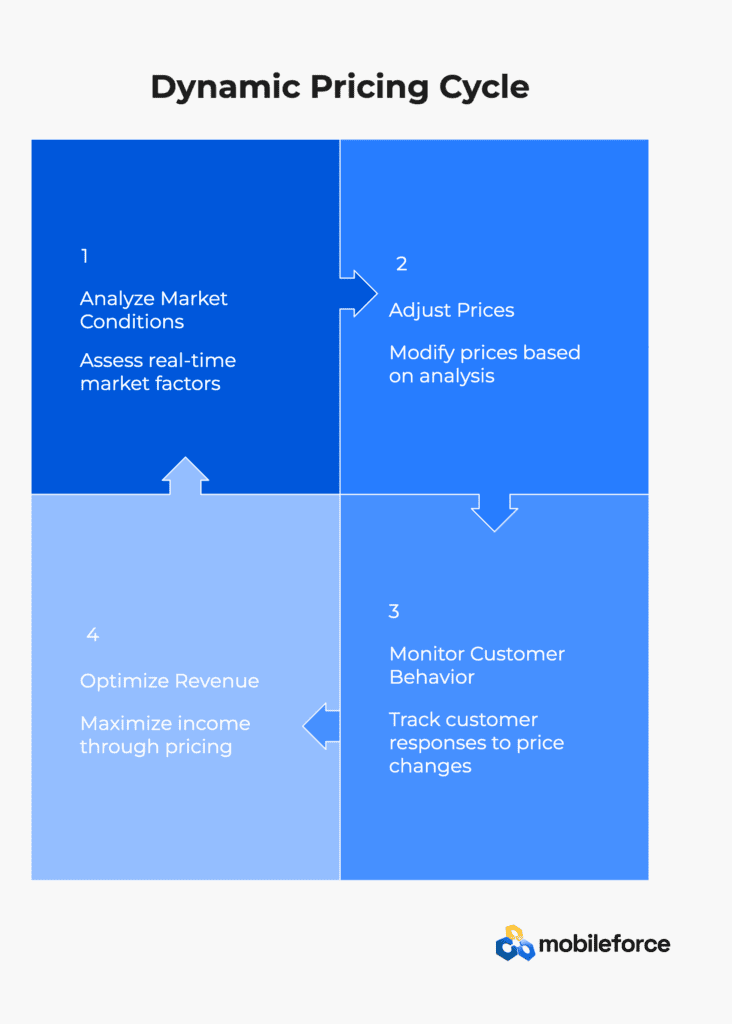
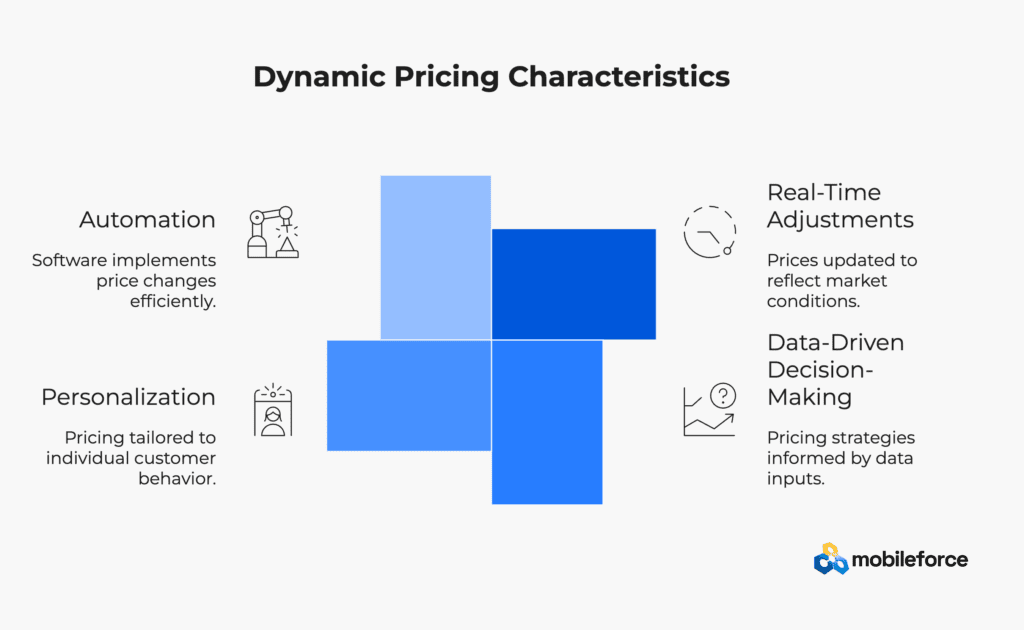
Key Characteristics of Dynamic Pricing
- Real-Time Adjustments: Prices are updated in real-time or at frequent intervals based on predefined rules or algorithms to reflect current market conditions and customer demand.
- Data-Driven Decision-Making: Relies on data inputs such as customer preferences, competitor prices, inventory levels, and historical trends to inform pricing strategies.
- Personalization: Pricing is often tailored to individual customers or specific market segments based on their behavior, purchasing history, and willingness to pay.
- Automation: Uses advanced software tools and AI-driven algorithms to implement price changes efficiently without requiring manual intervention.
Applications of Dynamic Pricing
Dynamic pricing is widely used across various industries to drive profitability and competitiveness:
- E-commerce Platforms: Online retailers adjust prices dynamically based on competitor pricing, demand surges during peak shopping periods (e.g., holidays), or customer browsing behavior.
- Travel and Hospitality Industry: Airlines, hotels, and rideshare services use dynamic pricing to reflect real-time factors such as seasonal demand, booking times, seat availability, or traffic conditions.
- Subscription-Based Services: SaaS companies employ dynamic pricing to offer personalized discounts for specific users or adjust subscription tiers based on customer usage patterns and preferences.
- Retail Stores: Brick-and-mortar retailers implement dynamic pricing using electronic shelf labels that update prices in real-time to reflect inventory levels or promotional campaigns.
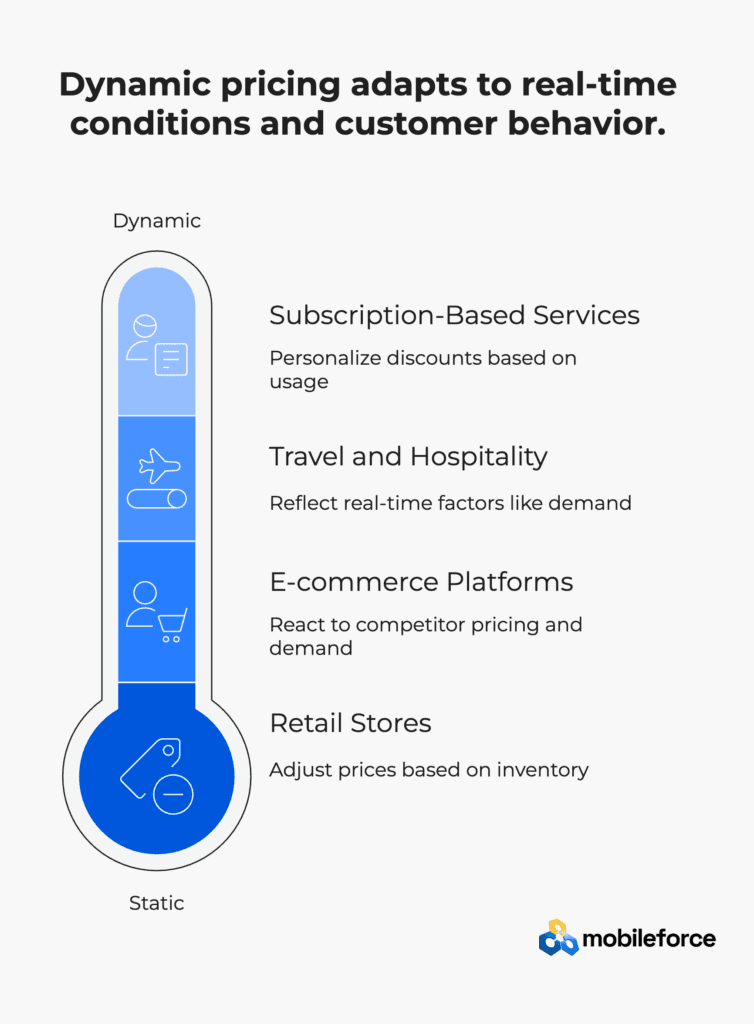
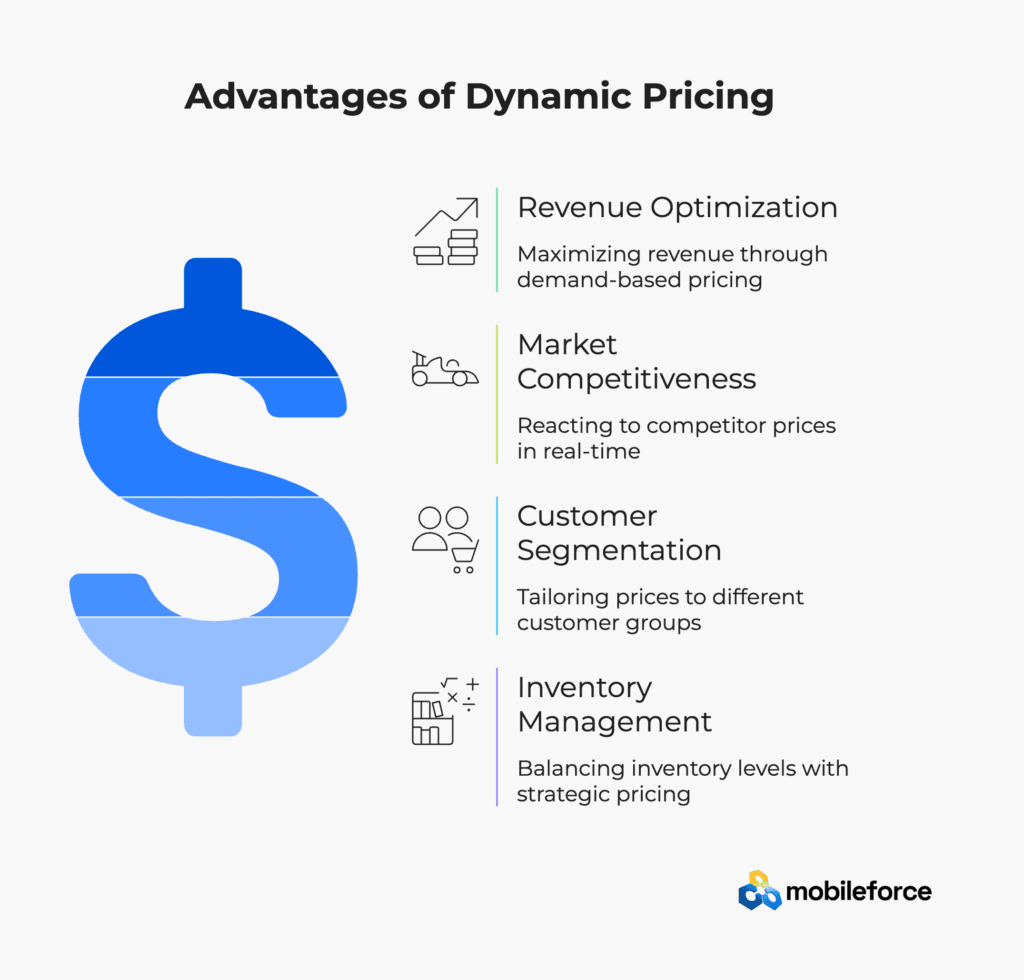
Benefits of Dynamic Pricing
Dynamic pricing offers several advantages for businesses looking to optimize their revenue and operations:
- Revenue Optimization: Helps businesses maximize revenue by charging higher prices during peak demand periods while offering discounts during low-demand periods to boost sales volume.
- Market Competitiveness: Enables businesses to react quickly to competitor price changes by adjusting their own prices in real-time to maintain an edge in the market.
- Customer Segmentation: Allows businesses to implement personalized pricing strategies tailored to different customer groups based on demographics, behavior, or loyalty status.
- Inventory Management: Encourages the sale of excess inventory through discounts while maximizing profits on high-demand items by increasing prices strategically.
Challenges of Dynamic Pricing
While dynamic pricing is a powerful tool, it comes with its own set of challenges that businesses must address carefully:
- Customer Perception Issues: Frequent price changes can lead to customer dissatisfaction if perceived as unfair or inconsistent, potentially harming brand loyalty.
- Implementation Complexity: Successfully implementing dynamic pricing requires sophisticated tools like AI-powered software and expertise in data analysis and algorithm design.
- Regulatory Concerns: In some cases, dynamic pricing may raise concerns about price discrimination or anti-competitive practices that could attract regulatory scrutiny.
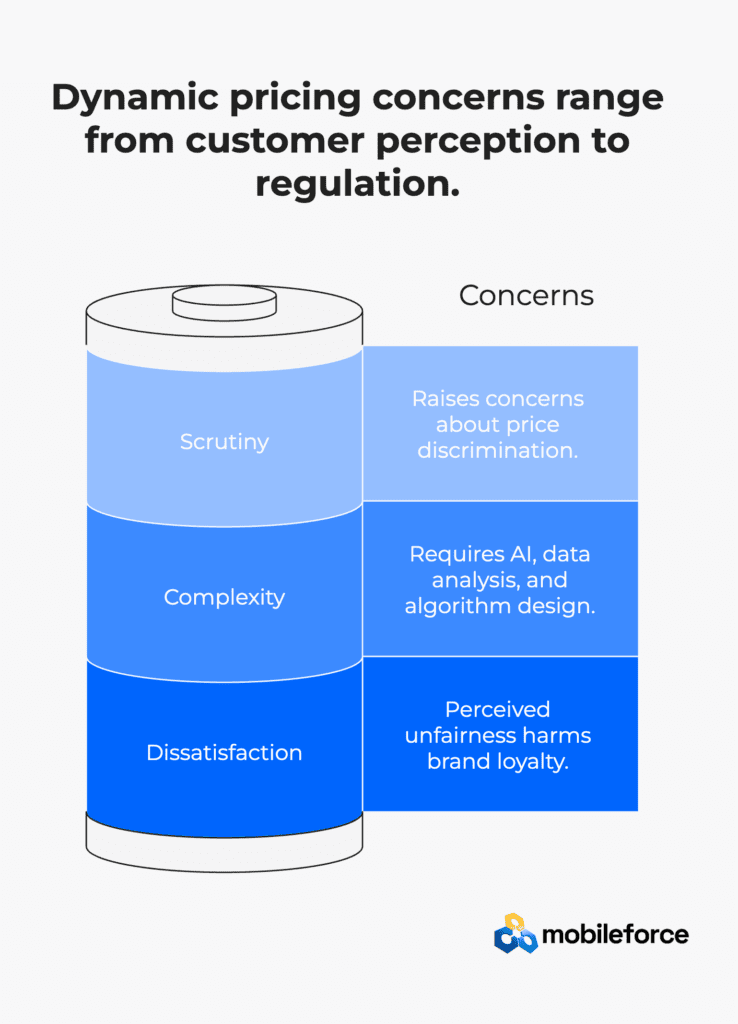
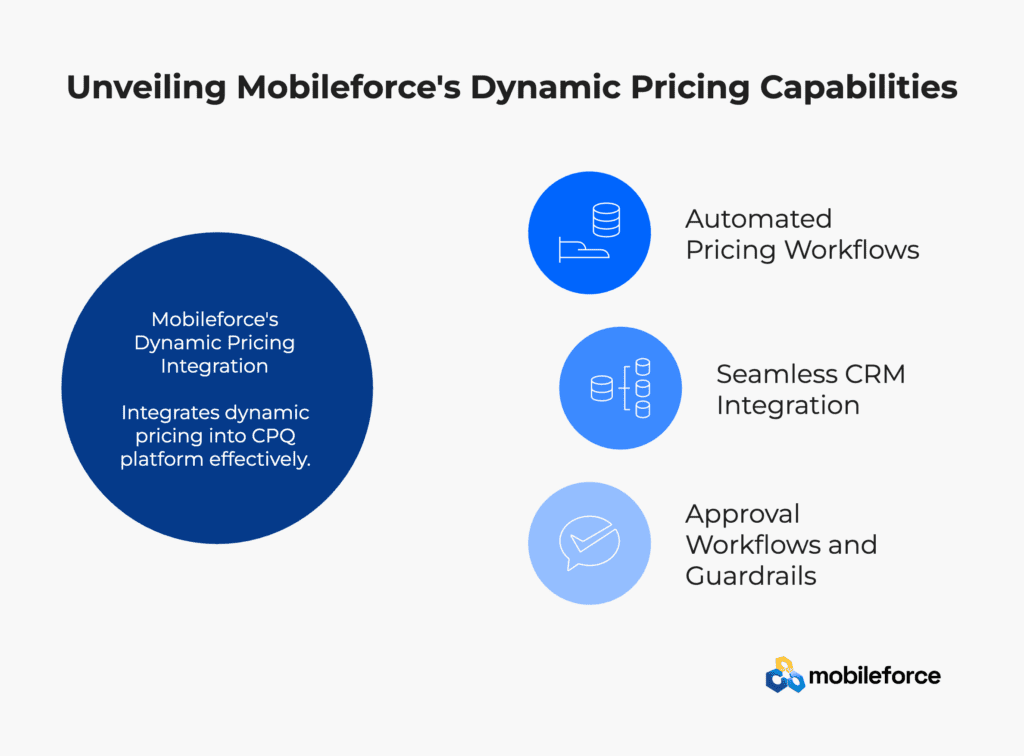
Dynamic Pricing in the Context of Mobileforce Software
Mobileforce Software integrates dynamic pricing into its powerful Configure, Price, Quote (CPQ) platform. By leveraging real-time data and rule-based algorithms, Mobileforce enhances the implementation of dynamic pricing strategies for businesses:
- Automated Pricing Workflows: Mobileforce automates complex workflows across multi-tiered models such as volume-based discounts or subscription-based pricing structures.
- Seamless CRM Integration: It ensures seamless integration with CRM systems like Salesforce or Microsoft Dynamics for accurate and up-to-date quotes that reflect real-time price adjustments.
- Approval Workflows and Guardrails: The platform supports approval workflows that ensure discounting limits are enforced while providing AI-driven insights for optimal price recommendations tailored to business goals.